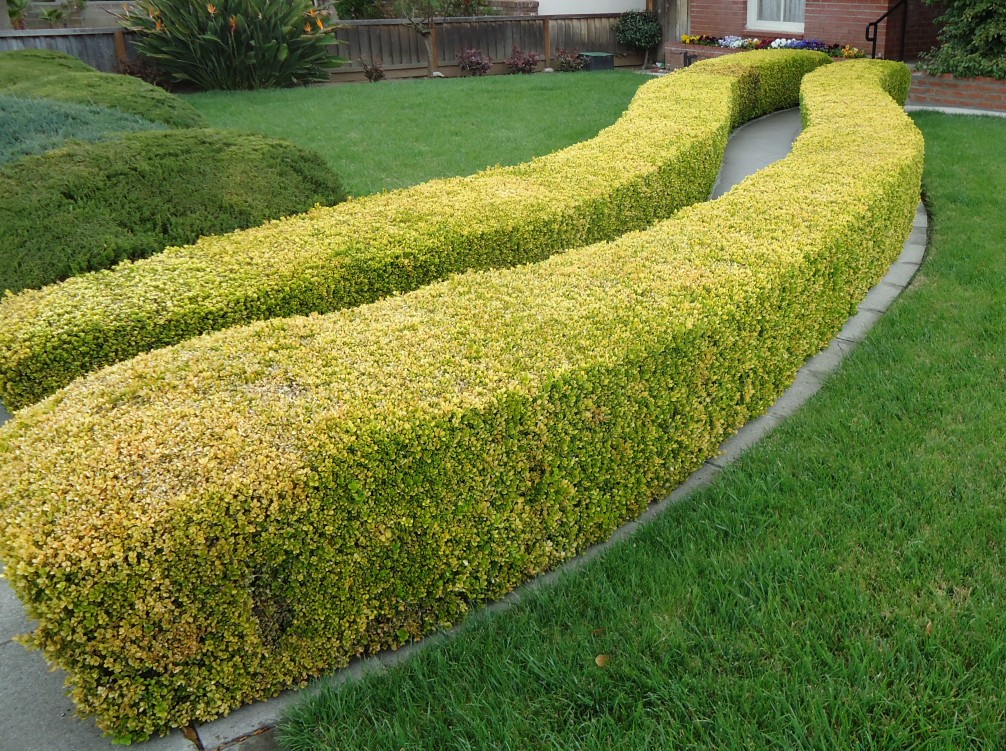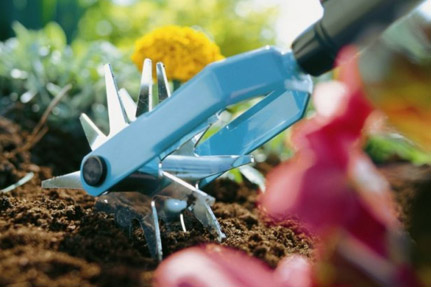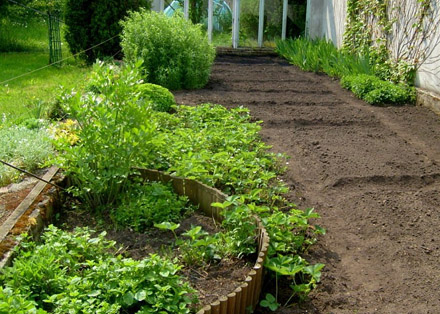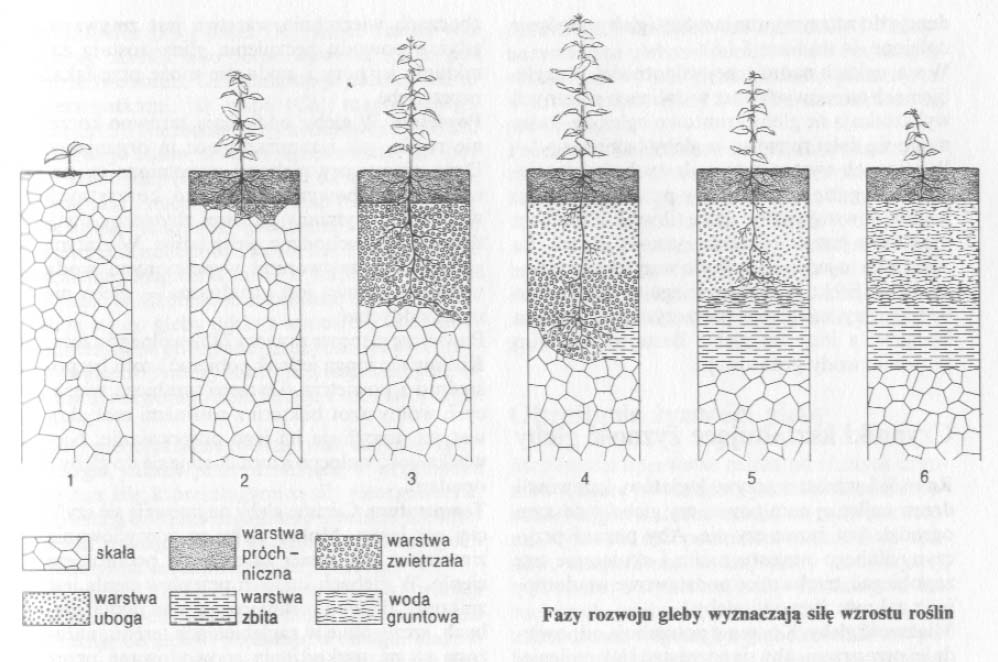 Mulczowanie, ściółkowanie i kompostowanie powierzchni gleby
Mulczowanie, ściółkowanie i kompostowanie powierzchni gleby
Pojęcia te można łatwo zdefiniować, ale znacznie trudniej rozgraniczyć w praktyce, tym bardziej, że istnieją także rozwiązania pośrednie. Wpływ ściółki na życie w glebie i wzbogacanie jej w próchnicę nalepiej widać w lesie liściastym. Ściółka umożliwia utrzymanie właściwej struktury gleby, chroniąc ją przed zniszczeniem — zapobiega wysuszeniu, spękaniu i zaskorupieniu lub zamuleniu. W lekko zacienionej glebie zwierzęta glebowe są aktywniejsze, w związku z czym szybciej następuje przemiana ściółki w stałe źródło składników pokarmowych dla roślin. Ściółkowanie ogranicza także wzrost chwastów, co zmniejsza nakład pracy związanej z u-prawą gleby.
Mulczowanie jest to pokrywanie powierzchni gleby ściętymi roślinami uprawianymi na zielony nawóz, nie kwitnącymi chwastami, trawą i innymi roślinami, które rosną w tym samym miejscu lub w najbliższym sąsiedztwie. Taki materiał organiczny mikroorganizmy glebowe całkowicie rozkładają w okresie zaledwie kilku letnich tygodni. Można też motyką płytko zmieszać rośliny z glebą — wówczas rozłożą się jeszcze szybciej.
Ściółkowanie jest to okrywanie powierzchni gleby materiałem pochodzącym spoza ogrodu, jak słoma, lekko przekompostowane liście lub skoszona, przesuszona trawa.
Kompostowanie powierzchniowe polega na rozrzuceniu i płytkim zmieszaniu z glebą zielonej masy roślin, lekko rozłożonego obornika lub częściowo rozłożonej masy kompostowej. Najlepiej łączyć ten zabieg z uprzednim wysianiem na zagonie roślin na zielony nawóz, np. koniczyny białej lub lucerny chmielowej, która tę warstwę przerośnie i przyspieszy przekształcanie masy organicznej w próchnicę.
O wartości ściółkowania powierzchni, a także kompostowania górnej warstwy gleby możemy się wiele dowiedzieć ze sprawozdania K. Hanke (1963):
„Kiedy chciałam w 1952 roku płytką i kamienistą glebę pastwiskową na północnym zboczu Jury Szwabskiej zamienić w żyzną glebę ogrodową dla naszego Instytutu, natknęłam się na kilka przeszkód. Podczas suchego lata przekopywana gleba była silnie spękana, a szerokość szczelin odpowiadała grubości dłoni. Zniszczone zostało życie glebowe. Kiedy po długotrwałej suszy nastąpiły oczekiwane opady burzowe, woda szczelinami spływała szybko do głębszych warstw gleby. Górna warstwa gleby szybko się zamuliła i zasklepiła, przez co cenna woda spływała po jej powierzchni tak. że nawet powstałe na polu samoistnie tarasy nie mogły temu zapobiec. Pewnego razu podczas spaceru do pobliskiego lasu zwróciłam większą uwagę na warstwę wspaniałej ściółki leśnej. Od tego momentu zajęłam się intensywnie problemem ściółkowania gleby. Z pomocą dzieci zbierałam na skraju lasu i w rowach liście buków, klonów i jesionów. Z tych liści, po dodaniu szlamu z rowów. wapna palonego, nawozów organicznych i świeżego kompostu, założyliśmy długie pryzmy kompostowe. Zostały one przykryte lekko rozłożoną trawą, a ich wilgotność utrzymywano podlewając tzw. gnojówką pokrzywową i innymi gnojówkami roślinnymi. Późną jesienią spulchnione zagony pokryliśmy równomiernie niezbyt grubą warstwą na wpół rozłożonego kompostu liściowego. Tego kompostu nie wystarczyło na całą powierzchnię. W związku z tym pozostałą powierzchnię uprawną, po płytkim spulchnieniu, pokryliśmy liśćmi buraków ćwikłowych, rzodkwi, selera i cykorii, chwastami (przed zawiązaniem nasion), pokrzywami, trawą i cienką
warstwą na wpół rozłożonego kompostu. Wysialiśmy też w sierpniu żyto ozime, które wiosną przykopaliśmy lub skosiliśmy do ściółkowania. Żyto jest dobrym przedplonem dla marchwi, gdyż po jego uprawie połyśnica marchwianka (Psila rosae) unika składania jaj na młodych korzeniach marchwi w początkach czerwca. Wolne zagony obsialiśmy jesienią mieszanką landsberską (gorzowską) i wyką kosmatą. W okresie zimowym rośliny okrywowe upiększyły nasz ogród, a gleba zmieniła swoją barwę i strukturę. Wytworzyła się cienka powłoka, pod którą rozwijały się dżdżownice i inne organizmy glebowe. Udeptane ścieżki spulchnialiśmy widłami amerykańskimi, co ułatwiło dostęp powietrza do gleby.
Jak wyglądała płytko spulchniona gleba w okresie wiosennym? Ściółka uległa daleko idącemu rozkładowi, a nie rozłożone resztki roślinne zmieszaliśmy płytko z glebą. W czasie ciepłej pogody masowo pojawiły się dżdżownice. Gleba była wilgotna, pulchna, porowata, o przyjemnym zapachu, o wiele lepsza niż po głębokiej orce przedzimowej. Nie było już głębokich pęknięć, nawet w czasie długotrwałej suszy. Teraz można było szybko i łatwo przygotować zagony do siewu i sadzenia”.
Ten opis wygląda bardzo ciekawie i nęcąco. Jednak trzeba dobrze znać swoją glebę. Na przykład ciężkie i martwe gleby gliniaste trzeba jesienią koniecznie głęboko przekopać, aby mróz rozkruszył skiby. Nie wolno też niepotrzebnie ugniatać lub udeptywać gleby. Powierzchnię gleby pod krzewami jagodowymi można ściółkować przez cały rok. Do tego celu nadaje się nawóz świński, rozrzucony późną jesienią. Trzeba jednak uważać na nornice, nie można ich tolerować w ogrodzie.
W glebie ściółkowanej dobrze rosną pomidory, papryka i ogórki, a wyrastające chwasty można łatwo usuwać.








